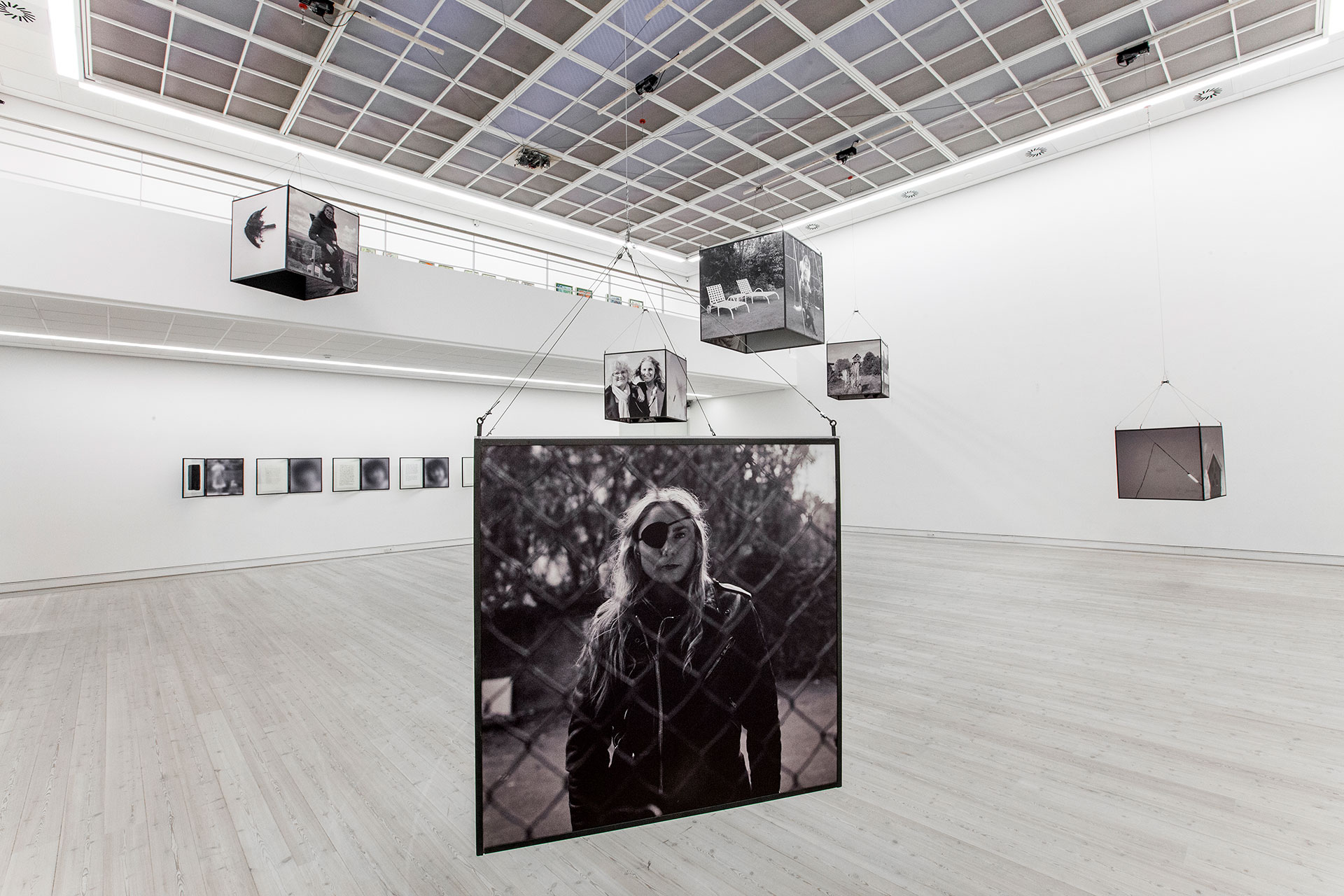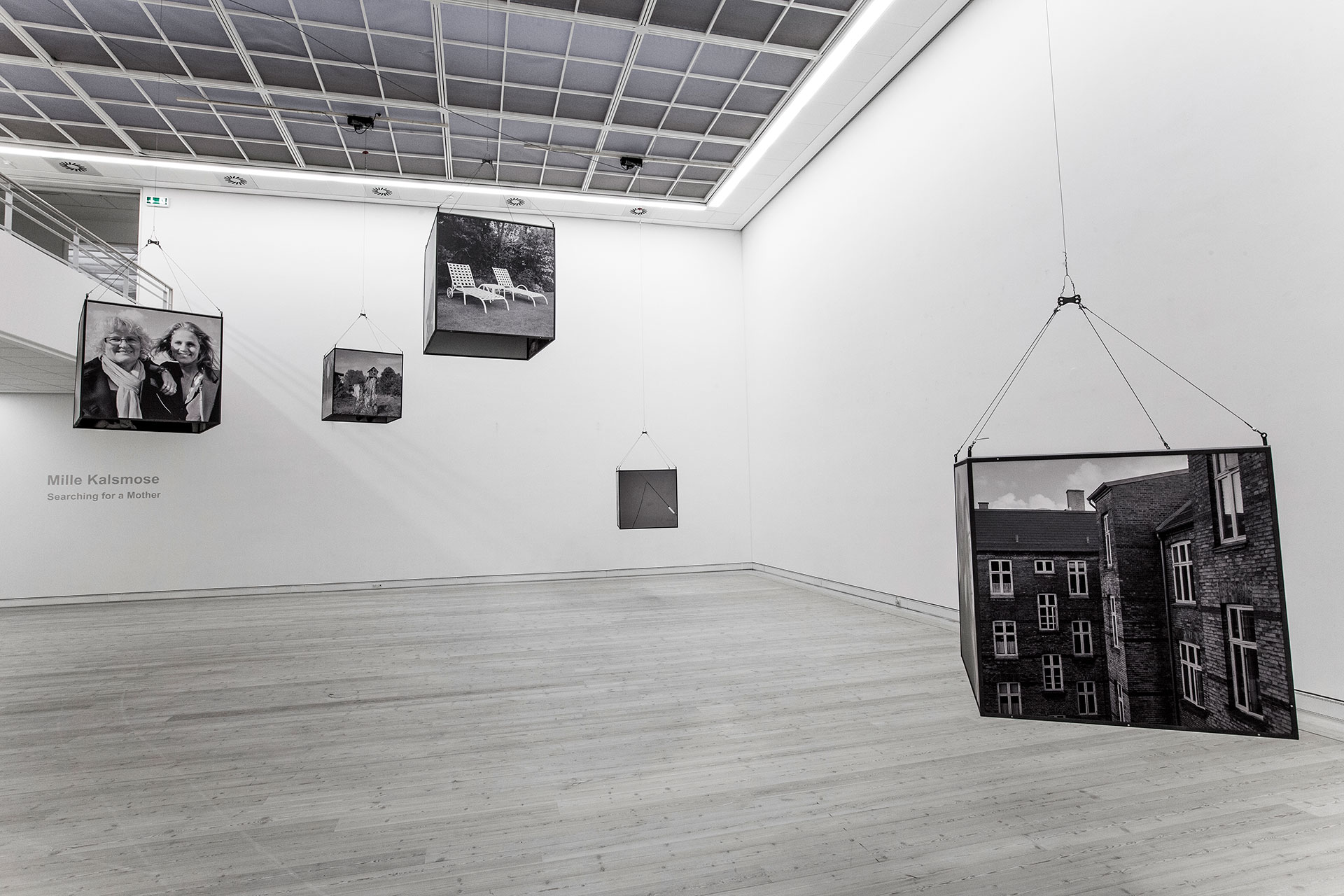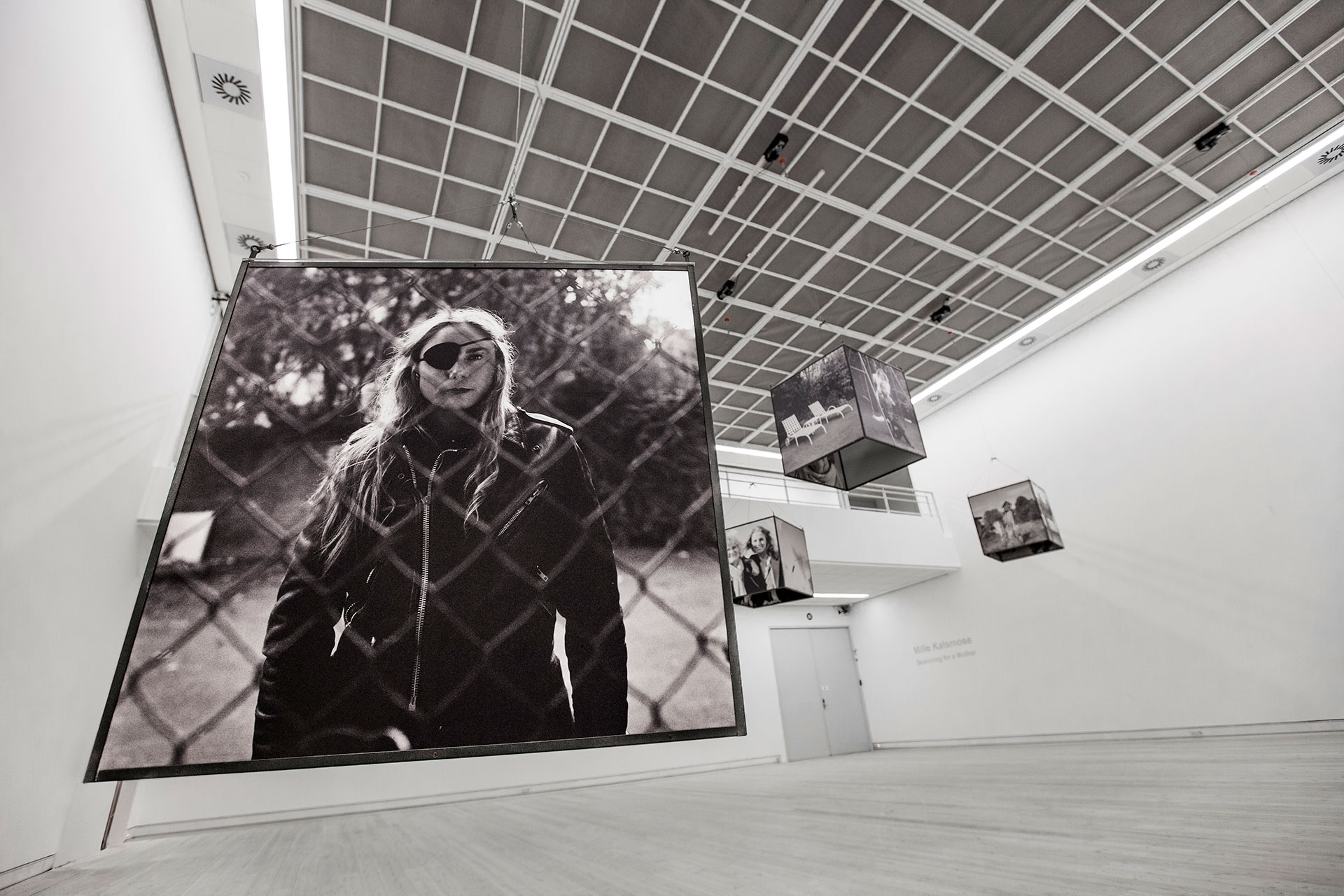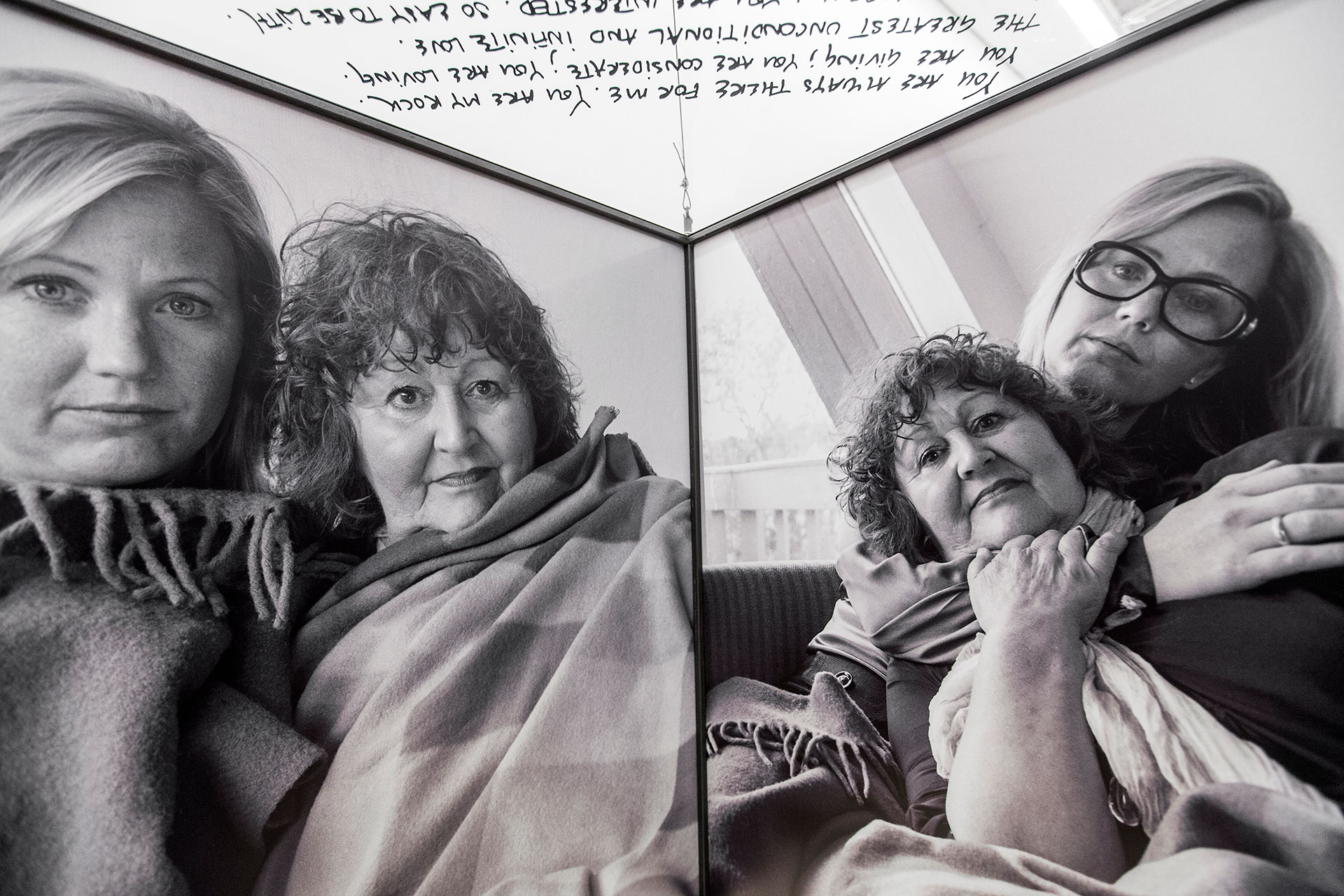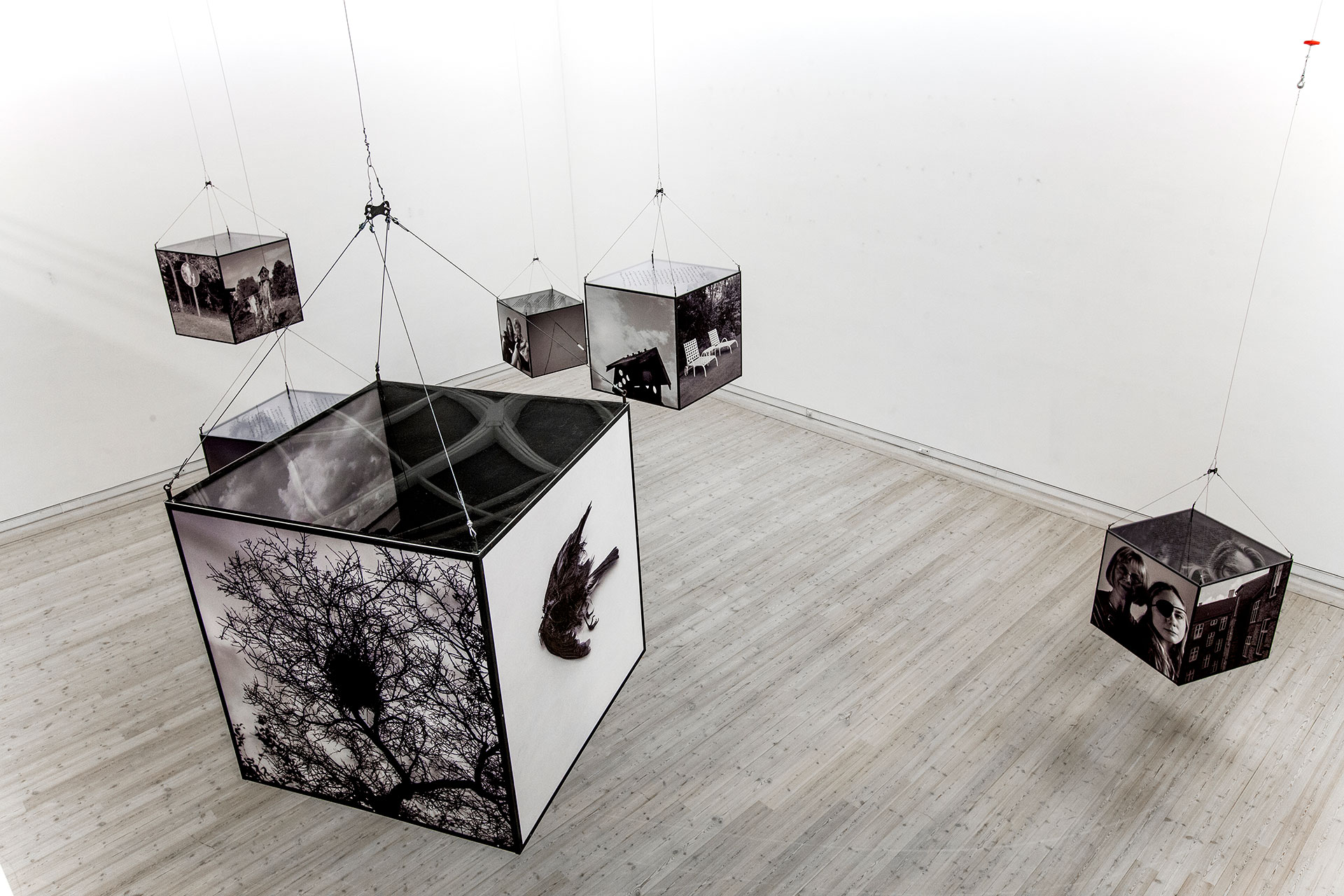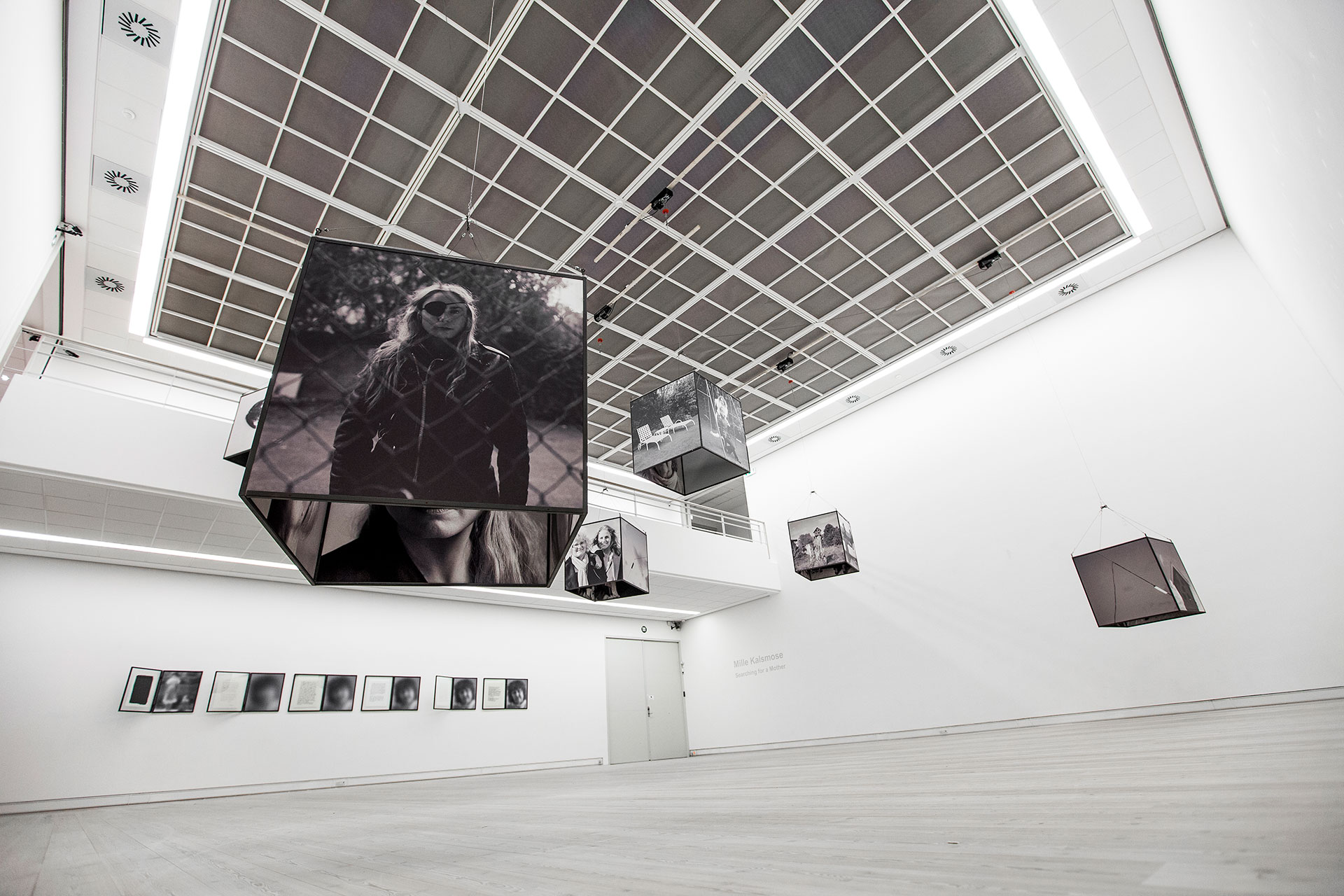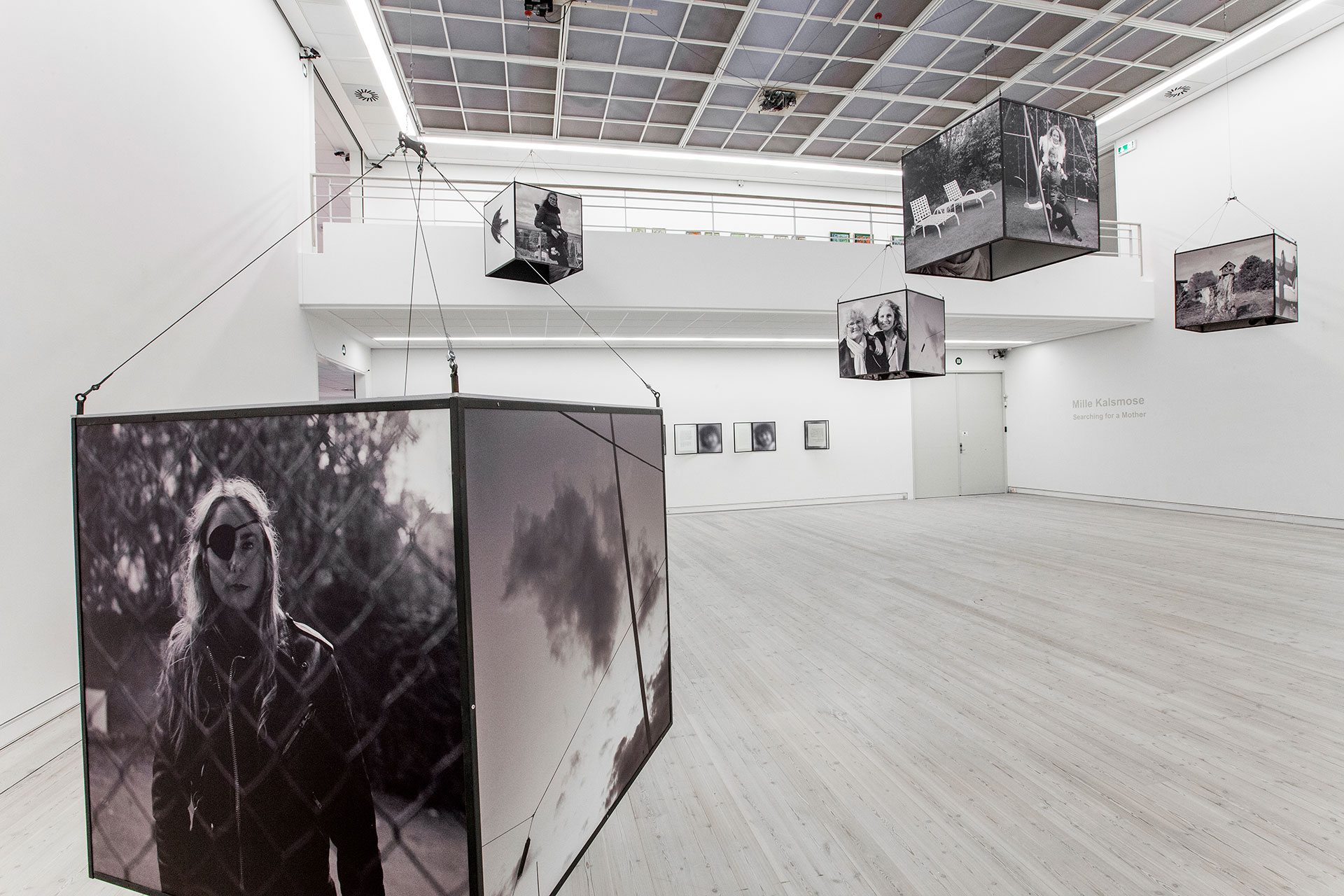Searching For a Mother
Mille Kalsmose in collaboration with Alberto García-Alix
Searching for a Mother is an intimate and visually powerful exploration of the idea of motherhood — not as a biological given, but as a constructed, desired, and emotionally charged relation. In this multimedia work, Danish artist Mille Kalsmose, in collaboration with renowned Spanish art photographer Alberto García-Alix, reimagines the mother-daughter bond through performance, portraiture, sculptural installation, and personal narrative.
The work revolves around the extrapolated sensation of having a mother — a speculative longing that emerges from both personal loss and universal desire. Through a series of staged photographic portraits, immersive sculptural elements, and handwritten reflections, Kalsmose and García-Alix explore what it means to create, imagine, or perform the maternal bond. At the heart of the project is a radical and deeply personal gesture: years after the suicide of her biological mother, Kalsmose initiates a real-life adoption process with a woman she has chosen to be her new mother. Together, the two women inhabit familial scenes — imitating other mothers and daughters in their homes — and thereby question the boundaries between fiction and truth, memory and invention, performance and real emotional connection.
The physical installation consists of six 90 x 90 x 90 cm cubes, constructed of double-sided Dibond disks and suspended within iron frames. These sculptural forms invite the viewer to literally insert themselves into the work by placing their heads inside the cubes. Within, viewers encounter portraits, mirrored surfaces, and intimate handwritten texts from daughters describing their relationships with their mothers. As one moves through the installation, the photo of Mille’s new mother becomes more visible — clearer with each text encountered — suggesting that through understanding the stories of others, one might approach clarity in their own longing.
This immersive interaction highlights the project’s core questions:
-
Can the mother-daughter relationship be formed by will, rather than biology?
-
What does the maternal represent — emotionally, culturally, psychologically?
-
Is the mother a person, a memory, an image, or an idea?
Searching for a Mother destabilizes one of our most taken-for-granted familial roles. Kalsmose’s intervention challenges essentialist assumptions about identity and family, positing that the self is not a static core but a performative, relational, and ever-evolving construct. The artist's earlier works, such as All My Suicides and Different Lives, similarly examined the mutable nature of selfhood, using her personal history as both material and methodology.
In this work, the family portrait becomes an act of creation — a performative naming of a relationship that does not yet exist, but might. As Anne Jerslev writes, this artistic act is not only a representation of a mother-daughter bond, but an actualization of it. Whether the title “Mother” refers to a specific individual or to a general archetype, it draws attention to the performative power of naming: to name someone mother is to invoke and begin to live that role. In doing so, Kalsmose demonstrates how chosen bonds, like chosen identities, can hold as much emotional weight and legitimacy as those determined by biology.
Supported by the Danish Art Council and the Catalan Culture Institute, Window to a Mother is both a deeply personal healing process and a universal reflection on how we form ourselves in relation to others. It invites viewers to contemplate not just the nature of motherhood, but the broader architectures of belonging, love, and self-construction.
By asking a question that is at once basic and radical — What does it mean to have a mother? — Kalsmose opens a window onto the invisible, yet foundational, structures that shape human life and connection.
